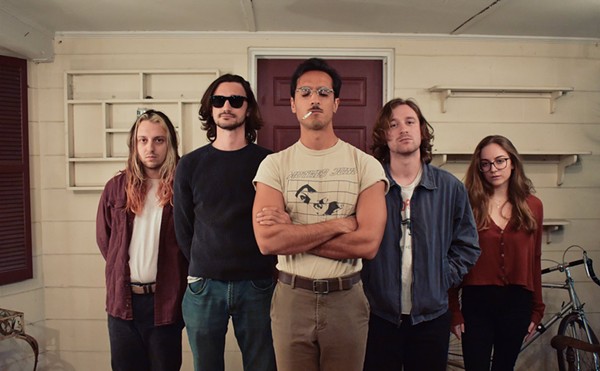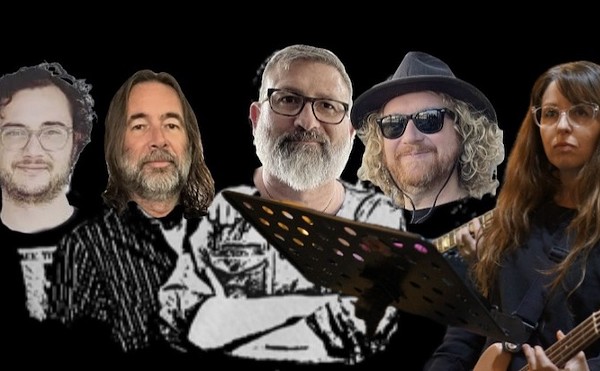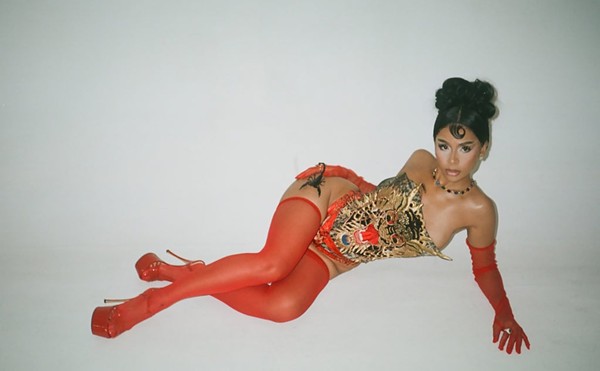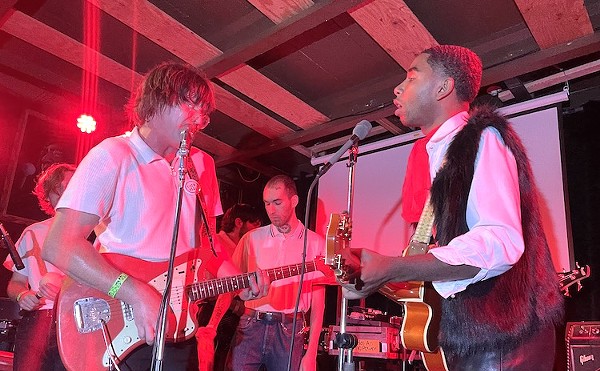Brian Eno has long been combining technology and creativity. Whether it was incorporating synthesizers into Roxy Music's art pop, developing the notion of nonspecific soundscapes or crafting bleeding-edge video installations, Eno's love of innovation has gone hand-in-hand with his aspirations to realize some complex theories about the presentation of multisensory works. The core of his "non-pop" work centers around notions of living art; that is, art that isn't constrained by gallery walls or concert halls. His subtly shifting ambient works were crafted as a way to enhance personal and public environments. He's applied mathematical theories and musique concrète techniques to pop music. His use of sampling was revolutionary. He made a home video that forced viewers to turn their TV on its side to watch it correctly. Eno's the guy who "composed" the freaking start-up sound for Windows 95 (a sound he reportedly uses on his, um, Macintosh).
One of the more interesting tangents Eno has explored recently is that of "generative" music. As a collaborator on the Koan software product, Eno helped to develop a piece of the software on which various parameters are defined; then the "engine" sets about building a theoretically infinite number of unique microcompositions. That is the central idea behind 77 Million Paintings, except instead of generative music, Eno is creating generative art. More correctly, he's crafted a tool by which a user can create generative art.
Enchanted by the notion that many households have large computer monitors and/or sizable flat-screen televisions in their living areas — both reproduce images in high resolution — Eno fashioned 77 Million Paintings not as a slideshow, but as a software program. The "paintings" aren't paintings at all, but permutations and combinations of elements that Eno has used in various visual installations, designated and manipulated in a way that's similar to the way the Koan software works and accompanied by an Eno ambient soundtrack.
At first blush, the whole thing seems like a glorified screensaver, but the random vastness of the entire project belies that notion. What at one moment is a brightly colored wash of faux-brushstrokes is, through a gentle and near-invisible metamorphosis, a stark presentation of monochromatic angularity a few moments later — only to eventually become a pointillist blur, a swirl of primitive patterns or a tactile, batik-like work. Appealing for its seemingly endless variety, the software gives a user the ability to control the way these tellingly sophisticated visuals interact with an environment. 77 Million Paintings is a promising step toward bringing conceptual art into nonartists' hands.
Such democratization of art through technology is a revolution that's benefited musicians and filmmakers as well as visual artists. While Eno's project demonstrates the effect on the latter, the Reline 2 DVD informs how musicians' and filmmakers' processes have also been irrevocably altered. Though it's a collection of highly experimental films accompanied by equally out-there electronic music, Reline 2 is not a DVD of interesting music videos. (Those are what Michel Gondry and Chris Cunningham make for Björk.) These works are true envelope-pushers, both in their visual approach and their sonics; nothing here is likely to be seen on even the most obscurely scheduled block of MTV programming.
Some of the artists on Reline 2 made their own music and visuals, exemplifying the adventure an artist can explore working solo, from concept to finish. Scott Arford's seizure-inducing strobe patterns erupt in an angry arrhythmia that makes you think (hope?) that your television is malfunctioning, while the organic morphology of Robert Seidel's "E3" attaches a soothing flow of Japanese characters and sloppy-wet brushstrokes to an appropriately relaxing soundtrack.
What's more interesting, though, is when the lines of inspiration are blurred. Did Otto von Schirach's frenetic, distortion-laced beats prompt the simplistic mania of Motomichi's logo-inspired graphics on "Laptops and Martinis"? Or was it the other way around? It's an irrelevant question, as the resulting work makes it difficult to imagine them separated.
Reline 2 is a disorienting piece of concept-forward visual art that would have been unthinkable with the technology of a decade ago. Both it and 77 Million Paintings prove that while accessible computational power certainly lowers the bar for entry into the world of art, in the hands of true artists, it's a dynamic tool.
[email protected]


















